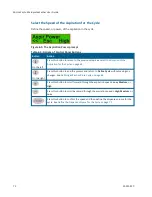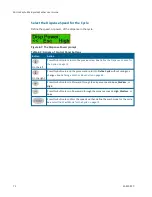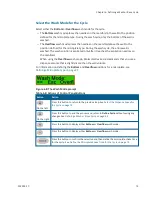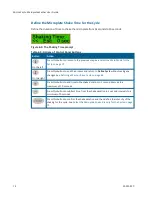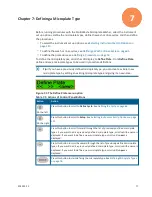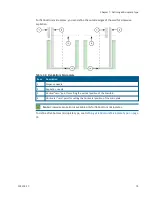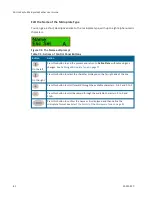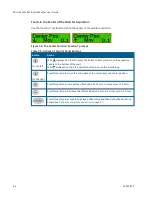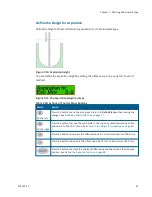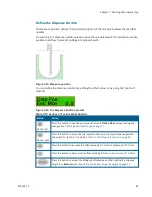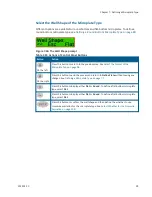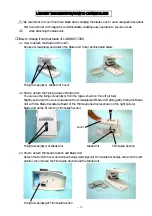
Mi Microplate Washer User Guide
84
5032022 C
Select the Well Shape of the Microplate Type
Different options are available for round-bottom and flat-bottom microplates. To define a
flat-bottom microplate type, see
Defining a Flat-Bottom Microplate Type on page 95
.
Figure 7-6: The Well Shape prompt
Button
Action
On the left
Press this button to return to the previous step. See
.
On the right
Press this button to end the process and return to
Define Plate
without saving any
changes. See
Defining a Microplate Type on page 77
.
Press this button to display either
Flat
or
Round
. To define a round-bottom
microplate type, select
Round
.
Press this button to display either
Flat
or
Round
. To define a round-bottom
microplate type, select
Round
.
Press this button to confirm the well shape and then define the center of the well for
aspiration for the microplate type. See
Define the Center of the Well for Aspiration
Table 7-7: Actions of Control Panel Buttons
Summary of Contents for MultiWash+
Page 1: ...5032022 C August 2019 MultiWash Microplate Washer User Guide ...
Page 20: ...MicroWash Microplate Washer User Guide 20 5032022 C ...
Page 50: ...MicroWash Microplate Washer User Guide 50 5032022 C ...
Page 64: ...MicroWash Microplate Washer User Guide 64 5032022 C ...
Page 144: ...MicroWash Microplate Washer User Guide 144 5032022 C ...

